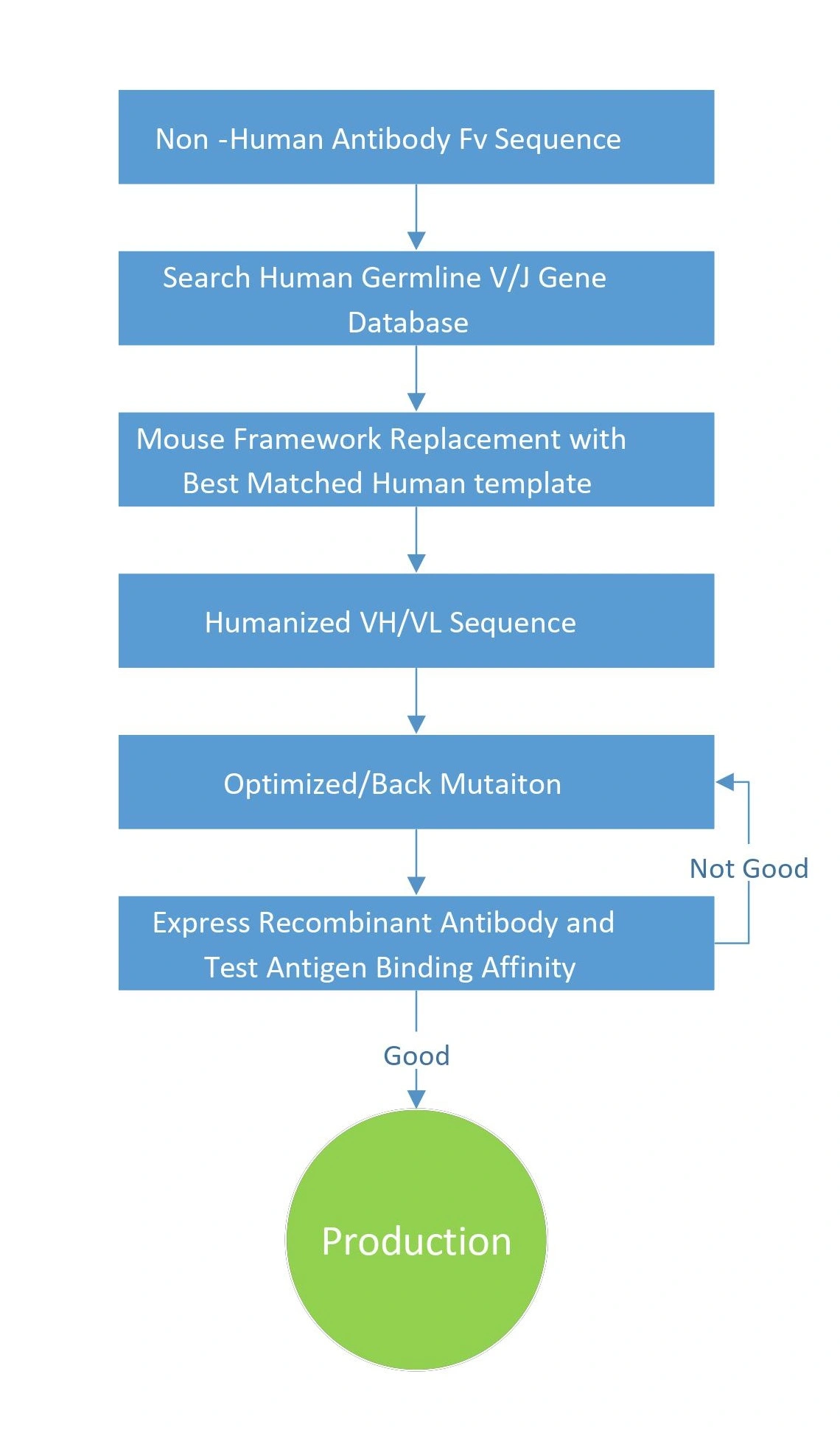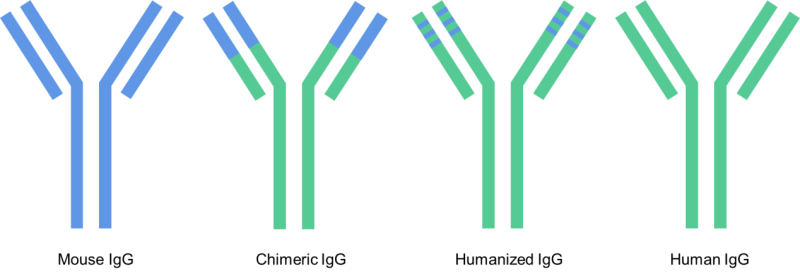Light chain
* Click for antibody sequence format fast-autocheck




LIBRA HuEasy™ is a Machine learning-based antibody humanization technology to balance high affinity with low immunogenicity. Easier, Faster, higher accuracy rate with less wet-validation procedure.
(Mouse IgG only, following the demo format) click to check the Demo Clear

With an extensive in-house data and the facilities of our antibody engineering research and development, GeneMedi developed an unique big-data-driven mature antibody humanization technology, LIBRA HuEasy™ . GM’s LIBRA HuEasy™ technology combines an artificial intelligence (AI) and prior wet data to form a self-evolution antibody humanization Algorithm. We are committed to offering an Easier, Faster, and efficient humanization service to balance high affinity and low immunogenicity for your parental antibodies.
LIBRA HuEasy™ is a Machine learning-based antibody humanization technology to balance high affinity with low immunogenicity. LIBRA HuEasy™ is an easier, faster and highly accurate, which reduce the wet lab validation procedure. For more information, please visit GeneMedi-LIBRA HuEasy™ website https://www.genemedi.com/i/BGMX-libra-hueasy-service.
LIBRA™ -Antibody Engineering Platform is GeneMedi’s innovative antibody engineering platform. LIBRA is developed with the characteristics such as Light, Intelligent, Balanced, Rational, and Algorithm-driven. LIBRA,(♎) is also Latin, meaning “Balance” in astrology. For more information, please visit GeneMedi-LIBRA™ website https://www.genemedi.com/i/about-LIBRA.
LIBRA AbProTM is GeneMedi’s professional antibody production platform for various antibody and antibody-conjugate formats. For more information, please visit GeneMedi-LIBRA AbPro™ website https://www.genemedi.com/i/BGMX-libra-abproduction-service.
Monoclonal antibody humanization is an important part of the development of antibody drugs, it has been widely used for non-human (such as mouse, rat, rabbit, and chicken) antibody engineering. Compared with the parental antibody, humanized antibody is almost entirely composed of human sequences and can substantially reduce immunogenicity when administered to human.
At present, the main immune globulin isotype used for humanization of mice, rats, and rabbits are IgG, while IgY is used for the chicken. Besides the whole IgG, Nanobodies, single-domain antigen-binding fragments of camelid-specific heavy-chain only antibodies offer special advantages in therapy over classic antibody fragments because of their smaller size, robustness, and preference to target unique epitopes also getting more attention towards the Humanization process for therapeutic application.
Species |
Isotypes |
|---|---|
|
mouse |
IgG1, IgG2a/IgG2c, IgG2b, IgG3 |
|
rat
|
IgG1, IgG2a, IgG2b, IgG2c |
|
human |
IgG1, IgG2, IgG3, IgG4
|
|
rabbit |
IgG |
|
chicken |
IgY |
|
camel |
hcIgG |
|
shark |
IgNAR |
The main technical process is modifying antibody sequence from non-human species to increase the similarity to antibodies produced naturally in humans.
BLAST the parental antibody variable domain sequence with the human antibody Germline database to find a suitable human template, then graft the complementarity-determining region (CDR) segment of the parental antibody to the corresponding CDR area of a human antibody. The antibodies produced by this method are also called as grafted antibodies.

The homology of nanobody and human antibody heavy chain variable domain (VH) can reach 80~90%. However, there is a small but significant difference between camel-derived VHH and human VH, the CDR1 and CDR3 of VHH are longer than human VH. In addition, in the framework (FR)-2, several conserved amino acid residues are hydrophobic in humans while the corresponding conserved residues in VHH are hydrophilic. Therefore, besides backmutation, in order to get better stability, solubility, and biological activity, humanized nanobodies also need to modify some FR residues.

Chimeric antibody contains variable domains from its original species (example: mouse), and constant regions from another species (example: human being) with high specificity. Compared with the mouse monoclonal antibody, a human-mouse chimeric antibody can efficiently reduce the production of a human anti-murine antibody (HAMA) in clinical trials. However, few patients still have HAMA responses against chimeric antibody, hence the chimeric antibody is not ideal for clinical treatment due to its immunological complication.
For a fully humanized antibody, its genetic source is 100% human-derived, the main ways include three technical routes, one is antibody library screening, creating a large library of variable domains of antibodies (in the form of so-called single-chain Fv fragment, scFv) on the surface of phage and therewith selecting and amplifying in E.coli. The 2nd route is the transgenic mouse, which refers to transferring all human antibody-encoding genes into its genome, which can express human antibodies. The 3rd route is available as an endogenous antibody from the human body. These agents are often harvested by identifying pathogen-specific B cells of patients who have recently recovered from an infection. For instance, Eli Lilly’s monoclonal antibody bamlanivimab (also known as LY-CoV555, aka LY3819253) was originally derived from the blood of one of the first U.S. patients who recovered from COVID-19.
Compared with chimeric antibodies, humanized antibody has lower immunogenicity, wider clinical applications, and higher difficulty in preparation. Even-though, the fully humanized antibody has got a marginal effect in reducing immunogenicity, the cost of production is very expensive.
| Mouse antibody | Chimeric antibody | Humanized antibody | Fully Human antibody | |
|---|---|---|---|---|
Human Immune Response | high, unavoidable | relatively high, unavoidable | low, avoidable | rare, avoidable |
clinical application | restricted, low application range | restricted | widely used | widely used |
production difficulty | low | relatively high | relatively high | high |
structure | fully mouse derived | fusing mouse derived variable regions to human constant regions | grafting mouse CDR into human variable framework regions | fully human derived |


Fill in your antibody sequence for HuEasy humanization.
This is a demo. After submitting, you will receive a report template.